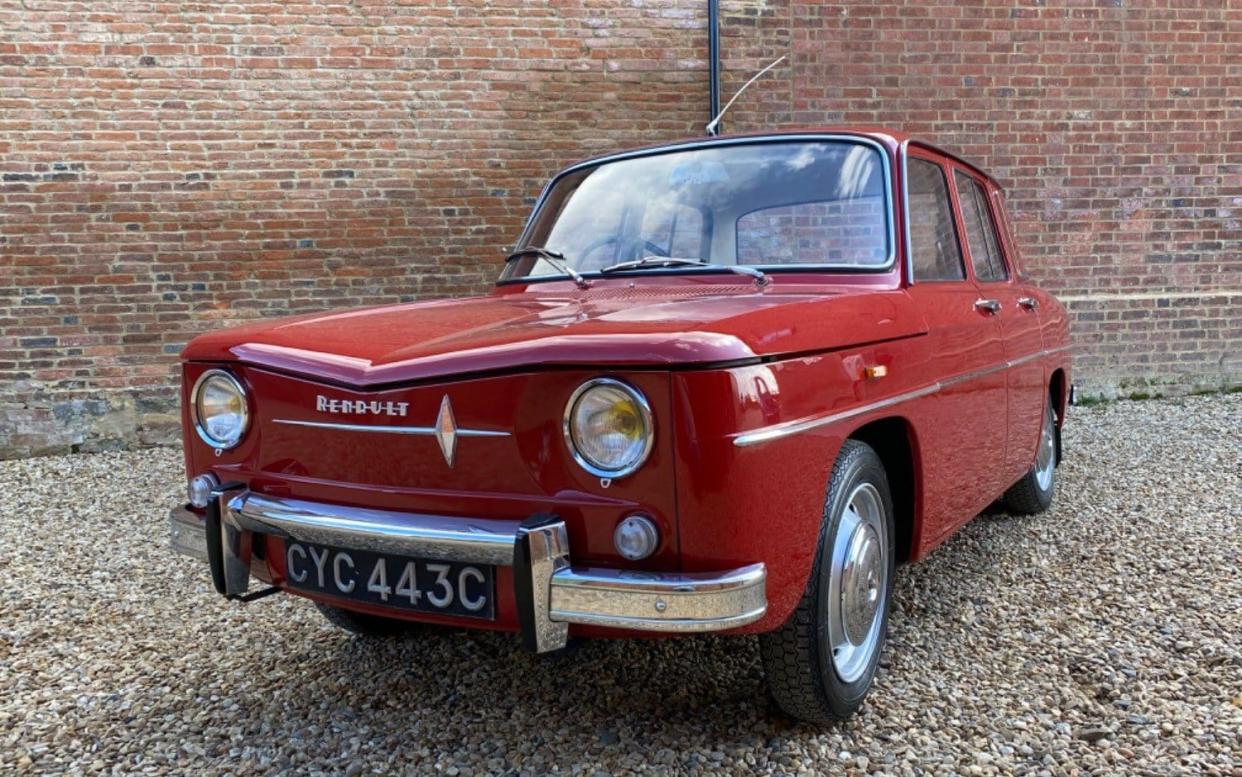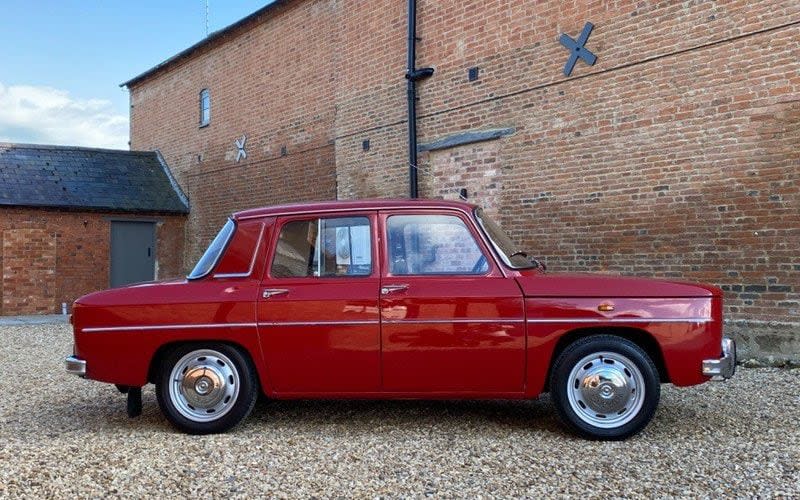UK’s rarest cars: 1965 Renault 8, the French saloon adored by a surprising number of British drivers

During the 1960s, the overseas marques most frequently encountered by a British driver were Citroën, Fiat, Volkswagen – and Renault. In its homeland, the 8 was almost omnipresent as family transport or a black and white police patrol car, and it further enjoyed considerable popularity in the UK.
Today, memories of the clattering engine at the back, the stiff catches for the sliding rear windows and the sloping floor of the boot are often all that remains. Only 59 are believed to be roadworthy and this 1965 example is the property of Anthony Hamilton.
Renault’s first rear-engined model was the 4CV of 1947, the French marque’s first car to sell more than a million units, followed nine years later by the Dauphine, the first French car to exceed two million sales.

By the late 1950s, the company embarked on the ideal vehicle for the ambitious young professional. Philippe Charbonneaux styled the distinctively angular bodywork, and the engine was the new four-cylinder, 956cc “Sierra” unit with an alloy cylinder head. The specification included all-independent suspension, rack and pinion steering and – uniquely for a small car of that era – Lockheed disc brakes front and rear.
The R8 was launched in June 1962; the suffix lasted until 1964. One promotional film almost guaranteed to tempt Citroën Ami 6 and Simca 1000 owners to their nearest Renault dealer.
A further key market was Dauphine owners in need of greater comfort, although the older model remained in production until 1967. British sales of the R8 commenced in September 1962, with advertisements promising “a style of comfort unmatched by any other car in its class”.

At £764 2s 9d, the R8 was considerably more expensive than a Ford Anglia 105E, but it offered four doors along with the social cachet of driving a “Continental car” at a time when such things were still considered exotic. With a Renault in the driveway, you could also play a Serge Gainsbourg disc on your Dansette record player to alert the neighbours to your sophisticated tastes. Meanwhile, work colleagues would undoubtedly be impressed by the standard heater, steering column lock, windscreen washers, fresh air vents and a starting handle for cold mornings.
Motor Sport regarded the R8 as “the best Renault of all; a splendid little car I would always enjoy taking on a journey”. In 1964, the firm introduced the high-performance Gordini variant to rival the Mini Cooper, as well as the 8 Major with a 1,108cc engine (known in the 8 1100 in the UK). The owner also benefited from a new four-speed, all-synchromesh gearbox, along with adjustable front seat backrests. The price was £674 16s 3d, and a top speed of 84mph meant the Renault was faster than a Morris 1100 or a Vauxhall Viva HA.

Autocar thought the latest Renault occupied “a very strong position in the small car battle”. However, the R4 of 1961 anticipated the company’s future with front-wheel drive, which the 16 of 1965 consolidated. The following year, the longer-nosed 10 replaced the 8 1100, with French production of the standard model ending in 1973.
Yet this was not quite the end of the narrative as FASA of Spain continued to produce the 8 until 1976. Other overseas variants hailed from Algeria, Australia, Bulgaria, Canada, Mexico, New Zealand and Venezuela. Probably the most famous models from outside the domestic market were from Romania, as in August of 1968 the Dacia 1100 became the first car to leave the Mioveni factory. To this day Dacia remains Renault’s budget brand.

In the UK, the 8’s numbers were already dwindling by the late 1970s, so it is remarkable to see any surviving example – particularly one that has escaped an inept transformation into a Gordini replica.
Hamilton’s example was registered on 1 March 1965 and was a member of Renault UK’s heritage fleet for nearly 15 years. In addition, it is a reminder of the days when taking delivery of an 8 might prompt any amount of suburban gossip.
But what did that matter with such an intriguing new car? As the sales copy boasted: “Even the comfort of your favourite armchair can’t compare with the comfort of the Renault 1100.”
Thanks to: Anthony Hamilton and Turn Two Classics

 Yahoo Movies
Yahoo Movies 
